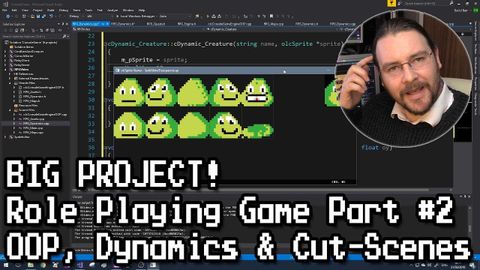コード・イット・ユアセルフ!ロールプレイングゲーム第2弾 (Code-It-Yourself! Role Playing Game Part #2)
林宜悉 が 2021 年 01 月 14 日 に投稿  この条件に一致する単語はありません
この条件に一致する単語はありません- v.t.(人を騙すために)ふりをする : 装う;仮定する : 推測する;(責任 : 任務などを)負う : 引き受ける
US /ˈprɑsˌɛs, ˈproˌsɛs/
・
UK /prə'ses/
- v.t.(コンピュータの)データを処理する;処理する;処理する;一連の工程を経る;加工する : 加工処理する;理解する
- n. (c./u.)手続き;一連の行為;方法;訴訟手続き;プロセス (コンピューター)
US /ˈɪnstəns/
・
UK /'ɪnstəns/
- n. (c./u.)例;発生;インスタンス
- v.t.例に挙げる
- phr.要請で
US /ˈkærəktɚ/
・
UK /'kærəktə(r)/
- n.(物語 : 映画 : 演劇などの)登場人物;文字;性格 : 性質;変わっている人;評判
エネルギーを使用
すべての単語を解除
発音・解説・フィルター機能を解除

